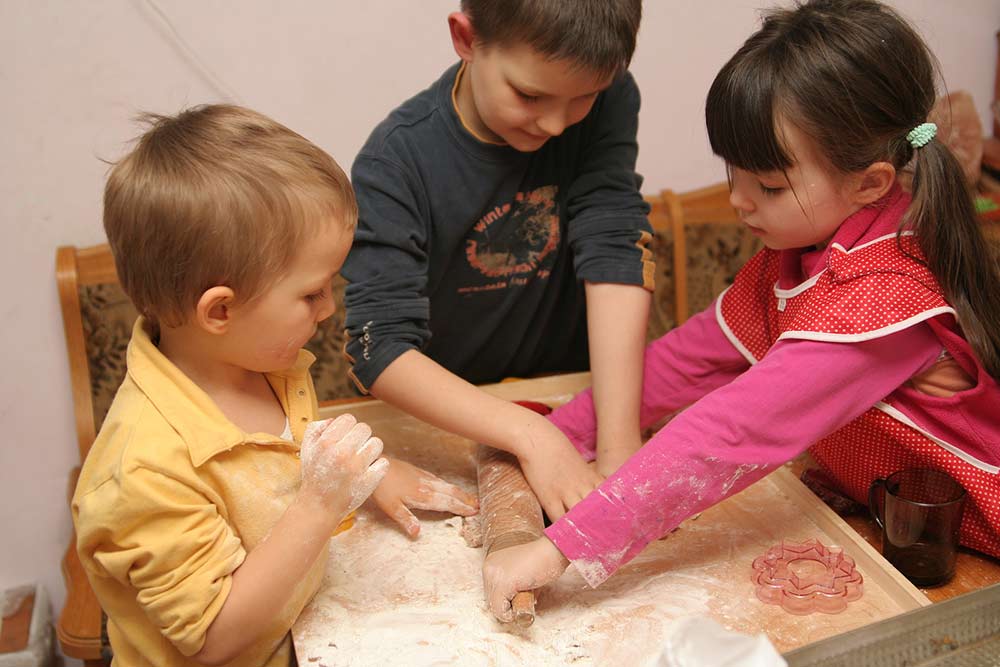 Social Stories were developed by Carol Gray in 1990. A Social Story can be a written or visual guide describing various social interactions, situations, behaviors, skills or concepts. According to Gray (2010) ‘a Social Story describes a situation, skill, or concept in terms of relevant social cues, perspectives, and common responses in a specifically defined style and format. The goal of a Social Story is to share accurate social information in a patient and reassuring manner that is easily understood by its audience.’
Social Stories were developed by Carol Gray in 1990. A Social Story can be a written or visual guide describing various social interactions, situations, behaviors, skills or concepts. According to Gray (2010) ‘a Social Story describes a situation, skill, or concept in terms of relevant social cues, perspectives, and common responses in a specifically defined style and format. The goal of a Social Story is to share accurate social information in a patient and reassuring manner that is easily understood by its audience.’
Although social stories were created to support individuals with autism, they also may help children without a developmental variation. As these stories help children understand different scenarios, such as what faces may look like when they are experiencing different emotions, being okay that your shirt got wet at the sink, or how to unpack your backpack when arriving at school, they are easily adaptable for all children and the different difficulties they may encounter throughout the day. Social stories are written in the first person, short and to the point, and typically are created specifically for a child or a group of children who are having a specific difficulty. Using pictures that the child helps take or are in, helps the child relate to the story quickly.
Social Story: sentence structures
Social story has three types of sentence structures: descriptive, perspective, and directive.
- Descriptive sentences: objectively define anticipated events where a situation occurs, who is involved, what they are doing, and why. (e.g., When people are inside, they walk.)
- Perspective sentences: describe the internal status of the person or persons involved, their thoughts, feelings, or moods. (e.g., Running inside could hurt me or other people.)
- Directive sentences: are individualized statements of desired responses stated in a positive manner. They may begin “I can try…” or “I will work on…” Try to avoid sentences starting with “do not” or definitive statements. (e.g., I will try to walk inside.)
A social story should have 3 to 5 descriptive and perspective sentences for each directive sentence. Avoid using too many directive sentences, or they will be lost without adequate contextualization. Click to read more social story tips (pdf).
As I have been teaching in an inclusive nursery school for the past three years, I have used a variety of social stories in my teaching, often helping students who do not have a developmental variation. Just this past year, many of my students were sensory avoidant, meaning they did not like to touch things that were wet, slimy, sticky, or messy. Later I realized that one of my students, Ella, was not actually sensory avoidance, she actually did love to play in the water table, but she hated the feeling of even just a drop of water on her shirt after playing at the table.
Creating a book called, “It Is Okay to Get A Little Wet or Dirty” with Ella, and then reading it to her, helped her to feel that it was okay to get a little wet or dirty and how to react after she became a little wet or dirty. Before reading the social story, Ella would get a drop of water on her shirt and cry and want to change immediately, but after reading the story a few times, telling her that it is okay to get a little wet and that it will dry, her reactions quickly changed. She then begin saying, “It is okay to get a little wet or dirty! My shirt will dry!” every time she got a little wet or dirty.
In the social story, the steps of how to react are clearly outlined so that Ella understood that a small spill on her shirt will quickly dry, but after a large spill and a really wet shirt, we can change her shirt.
It is always exciting to see how typing up a simple story, taking a few pictures, and stapling them together to create a book can quickly and effectively change a child’s behaviors.
At home a few social story ideas are:
- How to behave at the supermarket
- What to do at bed time
- Sharing
- Taking turns
- What to expect with a new baby at home
For more information about social stories, please review these resources:
- Gray, C. (2010). What are Social Stories?. In The Gray Centre. Retrieved October 15th 2010, from http://carolgraysocialstories.com/social-stories/
- Broek, E., Cain, S.L., Dutkiewicz, M., Fleck, L., Grey, B., Grey, C., et al. (1994). The Original Social Story Book. Arlington, TX: Future Education.
By Felicia Shulman, Learning Specialist